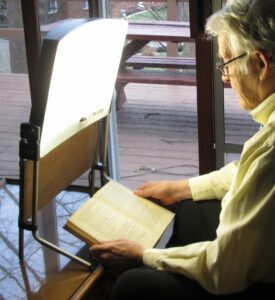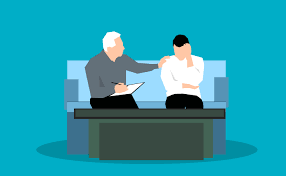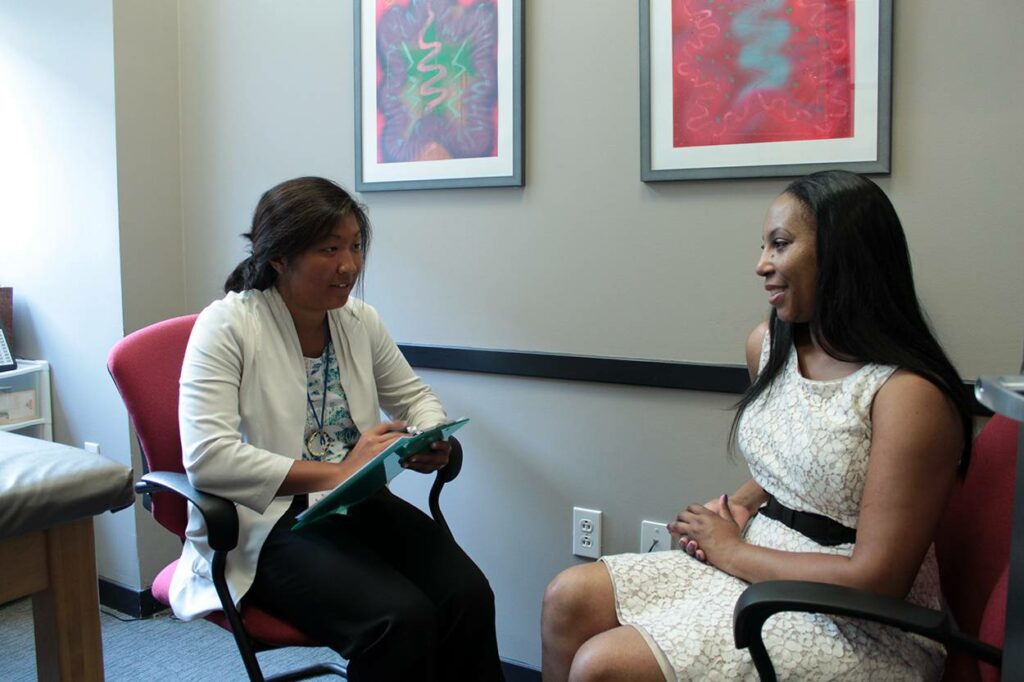Seasonal Affective Disorder (SAD) is a type of depression that typically occurs during the fall and winter months. It can cause symptoms such as fatigue, low mood, and difficulty concentrating. This can significantly impact a person’s quality of life. Fortunately, there are several effective treatments available to help manage SAD symptoms and improve overall well-being. In this blog, we’ll explore seasonal affective disorder treatment options that are found to be effective.
Contents
What Is Seasonal Affective Disorder?

Seasonal Affective Disorder (SAD) is a type of depression that occurs during the fall and winter months when there is less sunlight and daylight hours are shorter. The exact causes of SAD are not known. Researchers believe that it is related to changes in the body’s internal clock. Also, the changes in levels of certain brain chemicals, such as serotonin and melatonin cause SAD.
The symptoms of SAD can be similar to those of other types of depression. However, they tend to occur at a specific time of year. Symptoms may include feelings of sadness, hopelessness, and worthlessness. It also includes changes in appetite and sleep patterns, lack of energy, and difficulty concentrating or making decisions. In some cases, people with SAD may also experience physical symptoms, such as headaches and stomach problems.
Is Seasonal Affective Disorder treatable?
Yes, it is a treatable condition. Seasonal affective disorder treatment options include light therapy, medication, talk therapy, and lifestyle changes. This may include exercise and spending time outdoors in natural sunlight. With the right treatment, many people with SAD can manage their symptoms and improve their quality of life. It is important to consult with a healthcare professional to determine the best treatment plan for your individual needs.
Light Therapy Treatment For SAD

Light therapy is also known as bright light therapy or phototherapy. It is a common treatment option for Seasonal Affective Disorder (SAD). This treatment involves exposure to a bright light source for a specific amount of time each day, typically in the morning.
The idea behind light therapy is that it helps regulate the body’s circadian rhythm, which can be disrupted during the winter months when there is less daylight. This disruption can lead to symptoms of SAD such as depression, fatigue, and low energy levels.
Process of Light Therapy
- During light therapy, individuals sit or work near a light box that emits a bright light, usually 10,000 lux or more. The light is emitted for a prescribed amount of time each day.
- The light box is positioned at eye level and is usually placed about 16-24 inches away from the person’s face.
- The person does not need to look directly at the light. Rather they can engage in other activities such as reading or working on a computer.
Duration for light therapy
Light therapy is typically done in the morning for about 20-30 minutes per day, although the exact duration and timing may vary depending on the individual’s needs and preferences. Some people may begin to see improvement in their symptoms within a few days of starting light therapy, while others may take several weeks.
It is important to note that not all light boxes are created equal. When selecting a lightbox, it is important to choose one that emits the correct amount of light and is specifically designed for treating SAD.
Side Effects of light therapy
Light therapy is generally safe and well-tolerated, with few side effects. However, some people may experience headaches, eye strain, or nausea during treatment. These side effects are usually mild and can be alleviated by adjusting the duration or timing of the light therapy sessions.
Talk Therapy Treatment For SAD

Talk therapy, also known as psychotherapy or counseling, can be an effective Seasonal Affective Disorder treatment option. In particular, cognitive-behavioral therapy (CBT) helps treat SAD, as well as other types of depression. Various adaptations of CBT like ACT, IPT, ERP therapy, or others can also be used to manage symptoms.
Process of talk therapy
CBT works by helping individuals identify and change negative thought patterns and behaviors that may be contributing to their depression. This therapy can help people develop coping strategies for dealing with SAD symptoms and improve their mood, energy levels, and overall functioning.
During CBT sessions, the therapist may ask the person with SAD to track their moods, thoughts, and behaviors to identify patterns and triggers. The therapist may also use various techniques to help the person challenge negative thoughts and beliefs, such as cognitive restructuring, problem-solving, and behavioral activation.
Focus Area of talk therapy
One of the main goals of CBT for SAD is to help individuals develop new habits and behaviors that promote wellness and reduce symptoms. For example, the therapist may encourage the person to establish a regular sleep routine, engage in physical activity, and spend time outdoors in natural sunlight. CBT can also help people develop coping skills to manage stress and difficult emotions that may arise during the winter months.
Duration of talk therapy
CBT for SAD is typically conducted one-on-one with a therapist, but group therapy sessions may also be available. The number of sessions required will vary depending on the individual and the severity of their symptoms, but most people can expect to attend therapy for several weeks to several months.
Medication Treatment For SAD
Medication can be an effective treatment for Seasonal Affective Disorder (SAD), either on its own or in combination with other treatments such as light therapy or talk therapy. Here are some potential medication treatments for SAD:
- Antidepressants: Selective serotonin reuptake inhibitors (SSRIs) are commonly prescribed antidepressants that can be effective in treating SAD. Other types of antidepressants, such as bupropion, may also be used.
- Melatonin: Melatonin is a hormone that regulates sleep-wake cycles. It can also help improve sleep patterns in people with SAD.
- Vitamin D: Vitamin D deficiency has been linked to depression. Hence, supplementation with vitamin D may help improve mood in people with SAD.
- St. John’s Wort: St. John’s Wort is an herbal supplement that may help improve mood and reduce symptoms of depression. However, its effectiveness for SAD is not well established.
- Lithium: Lithium is a mood stabilizer that may be used in severe cases of SAD, although it is not a first-line treatment and is associated with potential side effects.
Lifestyle Changes For SAD Recovery
 Making certain lifestyle changes can also be beneficial for people with Seasonal Affective Disorder (SAD) in addition to other treatments. Here are some potential lifestyle changes that can aid in SAD recovery:
Making certain lifestyle changes can also be beneficial for people with Seasonal Affective Disorder (SAD) in addition to other treatments. Here are some potential lifestyle changes that can aid in SAD recovery:
- Get outside: Exposure to natural sunlight, even on cloudy days, can help regulate the body’s circadian rhythm and improve mood. Consider taking a walk during daylight hours or sitting near a window to maximize exposure to natural light.
- Exercise: Regular exercise, especially outdoor exercise, can help boost mood and energy levels. Aim for at least 30 minutes of moderate physical activity each day, such as brisk walking, jogging, cycling, or swimming.
- Eat a healthy diet: Eating a well-balanced diet with plenty of fruits, vegetables, lean proteins, and whole grains can help improve mood and overall health. Focus on nutrient-dense foods and limit processed foods and sugary snacks.
- Practice stress-reducing activities: Yoga, meditation, and other relaxation techniques can help reduce stress and improve mood. Consider incorporating these activities into your daily routine.
- Socialize: Spending time with friends and family, participating in social activities, and volunteering can help improve mood and prevent isolation. Make an effort to connect with others regularly, even if it’s just through phone or video calls.
- Practice good sleep hygiene: Getting enough sleep and maintaining a consistent sleep schedule can help improve mood and energy levels. Set a regular sleep schedule, create a relaxing bedtime routine, and avoid caffeine and electronics before bedtime.
- Consider a vacation: Taking a vacation to a sunny location during the winter months can provide a break from the cold and darkness and help improve mood. Plan a vacation to a warm, sunny destination, or take a weekend trip to a nearby location with more daylight hours.
Conclusion
In conclusion, SAD is a type of depression that affects many people during the winter months. While it can be a debilitating condition, there are several Seasonal Affective Disorder treatment options are available. This includes talk therapy, light therapy, medication, and lifestyle changes. It’s important to work with a healthcare professional to develop a personalized treatment plan that addresses your unique symptoms and needs. If you’re struggling with SAD, don’t hesitate to seek help. With the right treatment and support, you can overcome SAD and regain control of your life.
For more information, please contact MantraCare. Depression is a mental illness characterized by persistent feelings of sadness, hopelessness, and loss of interest in daily activities. If you have any queries regarding Online Depression Counseling experienced therapists at MantraCare can help: Book a trial Depression Therapy session.


